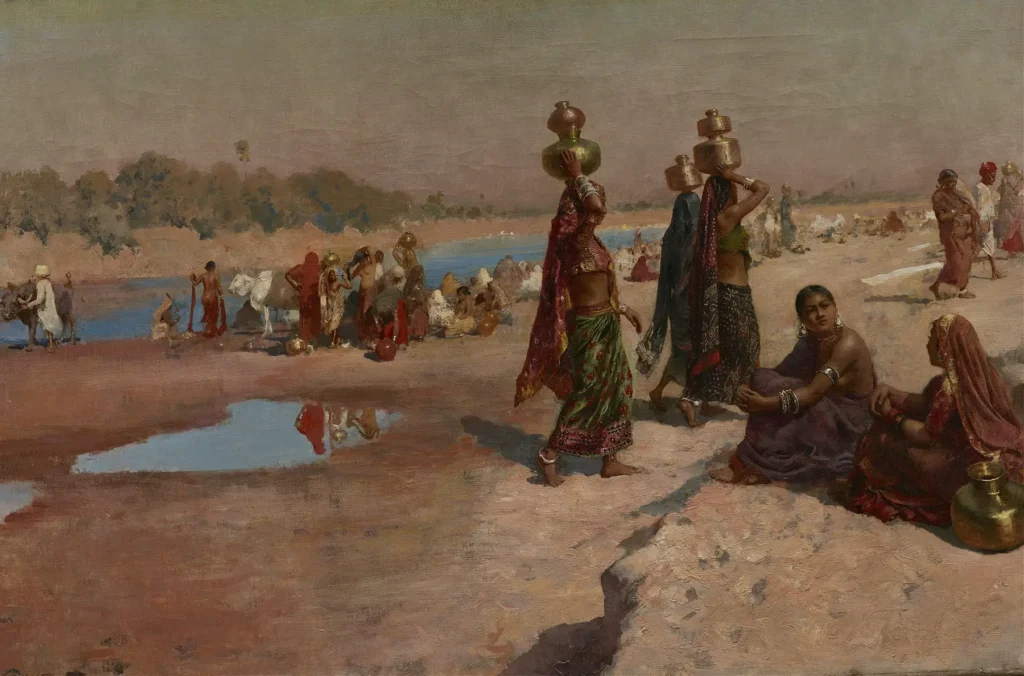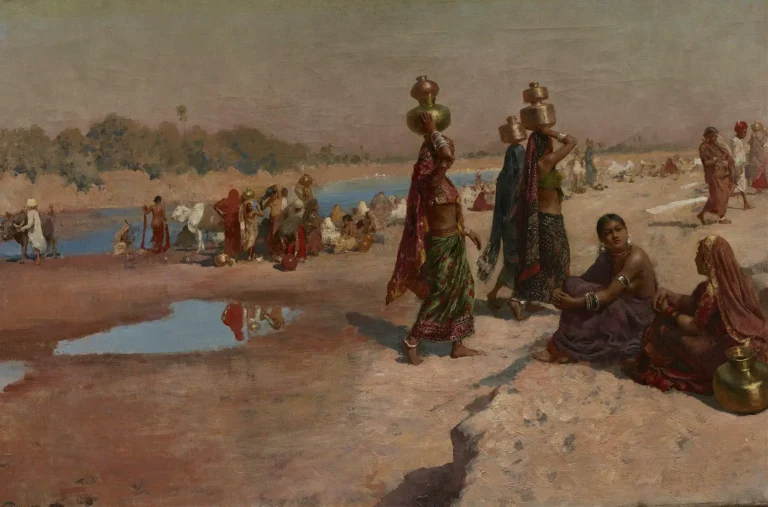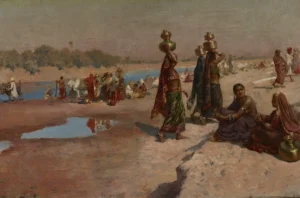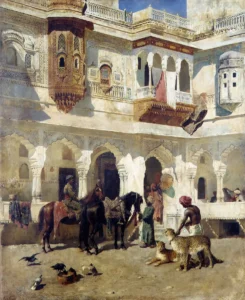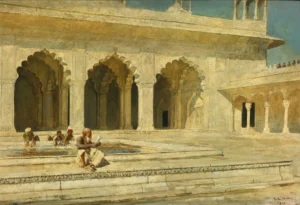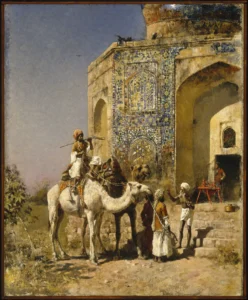Water Carriers of the Ganges (c. 1885)
Water Carriers of the Ganges is an oil on canvas painting by American artist Edwin Lord Weeks, created around 1885. Measuring 24 1/4 × 36 1/2 inches, this artwork draws upon Weeks' extensive travels in India, reflecting the rich cultural and social life along the Ganges River. The vibrant colors and intricate details capture the essence of the local community, highlighting the importance of water carriers in urban Indian life. This piece exemplifies Weeks' skill in portraying the interplay of sunlight and shadow, setting it apart from other Orientalist works of the time.
Year 1885
About the Artwork
The story behind Water Carriers of the Ganges is deeply rooted in Edwin Lord Weeks' own experiences while traveling through India beginning in 1882. Captivated by the vibrant culture, diverse architecture, and daily rituals of the local populace, Weeks sought to depict scenes that would educate and amaze Western audiences about this exotic land. The Ganges River, considered sacred in Hindu tradition, served as a vital lifeline for the communities along its banks. By focusing on the water carriers, Weeks not only illuminated their essential role in society but also emphasized the beauty and complexity of Indian life, thereby challenging the one-dimensional views often held by his contemporaries.
Did You Know
Liked what you see? Add it to your collection.
Enjoyed reading? Share it.
... continued
Artist
Edwin Lord Weeks was born in Boston, Massachusetts, in 1849 to affluent parents who were spice and tea merchants. He was a pupil of renowned artists Léon Bonnat and Jean-Léon Gérôme in Paris and is known for his Orientalist works, which often depicted scenes from his extensive travels across Spain, Syria, Egypt, Morocco, Turkey, Persia, and India.
Artwork
Water Carriers of the Ganges is an oil on canvas painting that measures 24 1/4 × 36 1/2 inches (61.6 × 92.71 cm). The painting is part of Weeks' body of work inspired by his travels to India, which began in 1882. This period marked a significant shift in his career, as his vibrant and detailed depictions of Indian life, architecture, and culture gained him international acclaim.
Style and Impact
Weeks' paintings, including Water Carriers of the Ganges. are characterized by their fresh, bold images and a strong emphasis on the effects of sunlight and glare. His work distinguished him from other Orientalist painters of his time and contributed to a new vision of India centered on its monumental architecture and vibrant street life.
Current Location
The painting is part of the collection at the Dallas Museum of Art.




